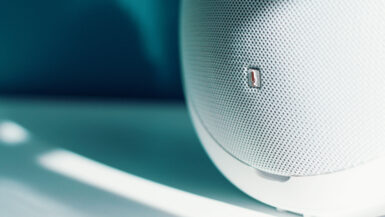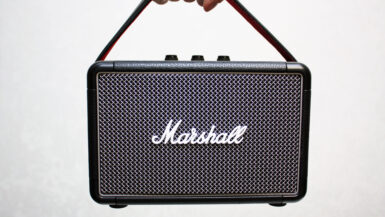In today’s technologically advanced era, home automation has become an essential aspect of our daily lives. With the advent of voice-enabled smart home devices, it is now possible to control various aspects of our homes with just a simple command. However, for individuals with hearing impairments, interacting with these devices may pose a challenge. In this article, we will explore various methods to create a voice-controlled smart home specifically tailored for the hearing impaired. We will delve into the integration of visual cues, vibration feedback, and other accessibility features to ensure seamless communication with the devices, making smart home automation more inclusive and user-friendly for everyone. Join us as we navigate through this essential guide to create an accessible, voice-controlled smart home experience for individuals with hearing impairments.
Top Voice-Enabled Devices for a Hearing-Impaired-Friendly Smart Home
Creating a voice-controlled smart home for the hearing impaired involves selecting the right devices with special features and compatibility to ensure seamless communication and convenience. In this subsection, we will explore some of the top voice-enabled devices designed to cater to the needs of individuals with hearing impairments. These devices come with various accessibility options, making them ideal for creating a hearing-impaired-friendly smart home environment.
Amazon Echo with Alexa Captioning
The Amazon Echo is one of the most popular voice-enabled smart home devices, and it comes with a built-in feature called Alexa Captioning. This feature provides real-time text captions for the spoken responses from Alexa, enabling individuals with hearing impairments to read the responses on their connected smart devices. Additionally, the Echo Show models come with a screen that displays visual responses, making it even more convenient for users who rely on visual cues.
Google Nest Hub with Live Caption
The Google Nest Hub is another excellent choice for creating an accessible smart home. The device features Live Caption, a real-time speech-to-text translation service that displays captions for audio content, including spoken commands and responses from Google Assistant. With its impressive suite of smart home integrations and accessibility features, the Google Nest Hub is a powerful tool for individuals with hearing impairments.
Apple HomePod with Siri and Visual Feedback
Apple HomePod is a smart speaker that features Siri, Apple’s voice assistant. While it may not have built-in captioning like some other devices, it can be paired with an iPhone or iPad to enable visual feedback for Siri’s responses. By customizing the settings on the connected device, users can receive visual cues and haptic feedback for voice commands, making it a suitable addition to a hearing-impaired-friendly smart home.
Sign Language-Compatible Smart Home Devices
Some innovative companies have started developing voice-controlled smart home devices that are compatible with sign language. These devices use cameras to recognize and interpret sign language gestures, allowing users to control smart home appliances and systems without relying on speech. While still in the early stages of development, these sign language-compatible devices have the potential to revolutionize smart home accessibility for individuals with hearing impairments.
As technology continues to advance, more voice-enabled devices are being developed with accessibility features in mind. By incorporating these devices into your smart home setup, you can create a more inclusive and convenient environment for individuals with hearing impairments.
Setting Up Visual Feedback for Voice Commands in Smart Homes
Creating an accessible and inclusive smart home for the hearing impaired involves more than just selecting the right devices. It also requires optimizing the settings and configurations of these devices to provide visual feedback for voice commands. In this subsection, we will discuss how to set up visual feedback for various voice-controlled devices to maximize their effectiveness for individuals with hearing impairments. By following these steps, you can ensure that your smart home becomes a more user-friendly and accommodating space for everyone.
Enabling Alexa Captioning on Amazon Echo Devices
To set up visual feedback on your Amazon Echo device, you need to enable Alexa Captioning. To do this, follow these simple steps:
1. Open the Alexa app on your smartphone or tablet.
2. Tap the “More” icon in the bottom right corner.
3. Select “Settings” and then “Accessibility.”
4. Toggle on “Alexa Captioning” to enable real-time text captions for Alexa’s spoken responses.
With Alexa Captioning enabled, users with hearing impairments can now read the responses from Alexa on their connected devices.
Activating Live Caption on Google Nest Hub
For Google Nest Hub users, setting up visual feedback involves turning on the Live Caption feature. Here’s how to activate it:
1. Swipe down from the top of the Nest Hub’s screen to access the quick settings panel.
2. Find the “Live Caption” option and tap on it.
3. Toggle on the “Live Caption” switch to enable real-time captions for audio content.
By enabling Live Caption, users can now receive visual feedback for both their spoken commands and Google Assistant’s responses.
Setting Up Visual Feedback for Siri on Apple Devices
Apple HomePod users can customize Siri’s settings on their connected iPhone or iPad to receive visual feedback for voice commands. To set up visual feedback for Siri, follow these steps:
1. Open the “Settings” app on your iPhone or iPad.
2. Scroll down and tap on “Accessibility.”
3. Select “Siri” under the “Voice Recognition” section.
4. Toggle on “Always Show Siri Captions” to display text captions for Siri’s responses.
5. Enable “Always Show Speech” to show real-time transcriptions of your spoken commands.
By customizing these settings, individuals with hearing impairments can now receive visual cues and haptic feedback when interacting with their Apple HomePod.
Exploring Third-Party Apps and Integrations
In addition to the built-in accessibility features of voice-enabled smart home devices, users can also explore third-party apps and integrations to enhance visual feedback options. For example, the IFTTT (If This Then That) platform allows users to create custom applets to trigger visual or haptic notifications on their smartphones, smartwatches, or other connected devices in response to specific voice commands or events. By exploring these additional solutions, you can further optimize your smart home setup to cater to the unique needs of individuals with hearing impairments.
By carefully setting up visual feedback for voice commands in your smart home, you can create a more accessible and inclusive environment that caters to individuals with hearing impairments. By considering their specific needs and preferences, you can ensure that everyone can enjoy the convenience and benefits of voice-controlled smart home technology.
Essential Voice-Controlled Home Automation Features for the Hearing Impaired
Creating a voice-controlled smart home for the hearing impaired goes beyond just selecting the right devices and setting up visual feedback. It’s also essential to consider specific home automation features that can enhance the overall experience and convenience for individuals with hearing impairments. In this subsection, we will discuss some of the key voice-controlled home automation features that can cater to the unique needs of individuals with hearing impairments, ensuring they can fully enjoy the benefits of smart home technology.
Customizable Visual Notifications for Smart Home Events
One of the essential features to consider when creating a voice-controlled smart home for the hearing impaired is customizable visual notifications for various smart home events, such as doorbells, alarms, and appliance status updates. Integrating smart lighting systems, like Philips Hue or LIFX, can allow users to set color-coded or flashing light patterns in response to specific events, providing visual cues for important notifications.
Vibration Feedback for Voice Commands and Alerts
Vibration feedback is another crucial feature for a hearing-impaired-friendly smart home. By integrating devices like smartwatches or fitness trackers, individuals can receive haptic feedback for voice commands, alerts, and notifications, ensuring they never miss important information or updates. This feature can be especially useful in situations where visual feedback might not be immediately noticeable, such as when the user is not facing their connected devices.
Integration with Hearing Aid-Compatible Devices
To further enhance the voice-controlled smart home experience for the hearing impaired, it’s essential to consider compatibility with hearing aid devices. Many smart home systems and devices offer the ability to connect with Bluetooth-enabled hearing aids, such as the Phonak Marvel or Oticon Opn hearing aids. This compatibility allows users to stream audio from their voice-enabled smart home devices directly to their hearing aids, providing clearer and more personalized audio feedback.
Speech-to-Text Solutions for Improved Communication
Another key feature to consider when creating a hearing-impaired-friendly smart home is the integration of speech-to-text solutions. These solutions can transcribe spoken commands, responses, and audio content into text format, enabling individuals with hearing impairments to read and understand the information being conveyed. Some popular speech-to-text services include Google’s Live Transcribe and Ava, which can be integrated with various smart home devices for improved accessibility.
Smart Home Routines and Automations for Enhanced Convenience
Finally, setting up smart home routines and automations can significantly improve the overall experience for individuals with hearing impairments. By using voice assistants like Alexa, Google Assistant, or Siri, users can create custom routines that trigger multiple actions with a single command, enhancing convenience and reducing the need for constant verbal interaction. For example, a “Good Night” routine could simultaneously turn off lights, lock doors, and set the thermostat to a comfortable temperature.
By focusing on these essential voice-controlled home automation features, you can create a more inclusive and user-friendly smart home environment that caters to the unique needs of individuals with hearing impairments. By combining these features with the right devices and configurations, you can ensure that everyone can experience the convenience and benefits of voice-controlled smart home technology.
Integrating Speech-to-Text Solutions for Enhanced Smart Home Accessibility
As we strive to create a voice-controlled smart home that caters to the unique needs of the hearing impaired, the integration of speech-to-text solutions plays an essential role in enhancing accessibility. These solutions can bridge the communication gap between users and voice-enabled devices by providing real-time text transcriptions of spoken commands and responses. In this subsection, we will explore some of the popular speech-to-text technologies and how they can be used to improve smart home accessibility for individuals with hearing impairments.
Choosing the Right Speech-to-Text Service
There are various speech-to-text services available on the market, each with its unique features and capabilities. When selecting a service for your smart home, it’s important to consider factors like accuracy, language support, and compatibility with your existing devices. Some popular speech-to-text solutions include:
1. Google Live Transcribe: A powerful app that provides real-time transcriptions of speech and ambient sounds. It supports over 70 languages and can be used on Android devices.
2. Ava: An app specifically designed for the hearing impaired, Ava transcribes conversations in real-time, making it an excellent tool for group settings and smart home integration.
3. Otter.ai: This AI-powered service offers real-time transcription, speaker identification, and synchronization with various smart home devices, making it a versatile choice for enhancing smart home accessibility.
Connecting Speech-to-Text Solutions to Voice-Enabled Devices
Once you’ve selected a suitable speech-to-text service, the next step is to integrate it with your voice-enabled smart home devices. This process may vary depending on the devices and services you’re using, but generally, you’ll need to set up a connection between your smartphone or tablet and the voice-enabled device. This may involve using Bluetooth, Wi-Fi, or a dedicated app to facilitate the communication between the devices. Once connected, you can customize the settings to ensure that real-time transcriptions are displayed on your preferred device, such as a smartphone, tablet, or smart display.
Creating Customized Alerts and Notifications
Speech-to-text solutions can also be used to create customized alerts and notifications for various smart home events. For example, you can set up your smart home system to send transcribed messages to your connected device whenever someone rings the doorbell, a security alarm is triggered, or an appliance needs attention. By configuring these alerts, individuals with hearing impairments can stay informed and respond to important events in their smart home without relying solely on auditory cues.
Expanding Accessibility with Third-Party Integrations
To further enhance smart home accessibility, you can explore third-party integrations and apps that support speech-to-text capabilities. For example, IFTTT (If This Then That) allows you to create custom applets that trigger text transcriptions or notifications based on specific events or voice commands. By experimenting with these additional tools, you can create a more personalized and accessible smart home experience for individuals with hearing impairments.
As the world of smart home technology continues to evolve, the integration of speech-to-text solutions is becoming increasingly important for ensuring that individuals with hearing impairments can fully benefit from voice-controlled devices. By selecting the right services, connecting them to your devices, and exploring custom alerts and third-party integrations, you can create an inclusive and user-friendly voice-controlled smart home for everyone to enjoy.
Customizing Voice Assistants to Maximize Efficiency in Hearing-Impaired Homes
In the quest to create a truly accessible voice-controlled smart home for individuals with hearing impairments, customization plays a crucial role. By tailoring voice assistants to cater to the specific needs and preferences of users with hearing impairments, it is possible to achieve a higher level of efficiency and convenience in their smart home experience. In this subsection, we will explore various methods to customize voice assistants, such as adjusting sensitivity, personalizing responses, and utilizing shortcuts to streamline interactions with smart home devices.
Adjusting Voice Assistant Sensitivity for Optimal Performance
One of the first steps in customizing voice assistants for hearing-impaired homes is to adjust the sensitivity of the device’s microphone. By fine-tuning the sensitivity settings, users can ensure that the voice assistant is more responsive to their commands, even if their speech may be quieter or less distinct due to their hearing impairment. Consult the user manual or device settings to determine how to adjust the microphone sensitivity for your specific voice-enabled device.
Personalizing Voice Assistant Responses for Enhanced Clarity
Another crucial aspect of customization is personalizing the voice assistant’s responses to cater to the user’s specific needs. This could involve modifying the speed, pitch, and volume of the voice assistant’s audio output to make it clearer and more comprehensible for individuals with hearing impairments. Many voice assistants, such as Alexa, Google Assistant, and Siri, offer options to customize these settings through their respective apps or device settings.
Utilizing Shortcuts and Custom Commands for Streamlined Interactions
To further enhance the efficiency of voice-controlled smart homes for the hearing impaired, consider utilizing shortcuts and custom commands. This allows users to create personalized phrases to execute specific actions or control multiple devices simultaneously, reducing the need for repetitive and lengthy verbal interactions. For example, a custom command like “Movie Time” could dim the lights, lower the window shades, and turn on the TV, simplifying the process and improving overall convenience.
Exploring Accessibility Features in Voice Assistant Settings
Voice assistants often come with built-in accessibility features that can be customized to better cater to the needs of individuals with hearing impairments. These features may include options like real-time captions, visual feedback, and vibration alerts. By exploring these settings and enabling the most suitable options, users can create a more accessible and user-friendly smart home environment.
Integrating Compatible Devices for a Cohesive Experience
To maximize efficiency in hearing-impaired homes, it’s essential to integrate compatible devices and systems that work seamlessly with your voice assistant. By selecting devices that are specifically designed with accessibility in mind, such as smart displays, smart lighting, and vibration-enabled wearables, you can create a cohesive and convenient experience for individuals with hearing impairments.
By taking the time to customize voice assistants and integrate the appropriate devices, it is possible to create a more efficient and accessible voice-controlled smart home experience for individuals with hearing impairments. By prioritizing their specific needs and preferences, you can ensure a more inclusive and user-friendly environment that allows everyone to enjoy the benefits of smart home technology.





Leave a reply